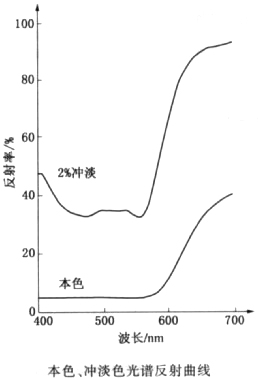C.I.Vatred29
Pigment Red 190
CAS: 6424-77-7
Molecular Formula: C38H22N2O6
C.I.Vatred29 - Names and Identifiers
| Name | Pigment Red 190 |
| Synonyms | 71140 P.R.190 perylenered VatscarletR C.I.Vatred29 2,9-Di(4-meth Pigment Red 190 Perylene Scarlet IndanthrenScarletR C.I.VatRed29(71140) Indanthren Scarlet R N,N'-Bis(4-methoxyphenyl)-3,4,9,10-perylenetetracarboxylic Diimide |
| CAS | 6424-77-7 |
| EINECS | 229-187-9 |
| InChI | InChI=1/C38H22N2O6/c1-45-21-7-3-19(4-8-21)39-35(41)27-15-11-23-25-13-17-29-34-30(38(44)40(37(29)43)20-5-9-22(46-2)10-6-20)18-14-26(32(25)34)24-12-16-28(36(39)42)33(27)31(23)24/h3-18H,1-2H3 |
C.I.Vatred29 - Physico-chemical Properties
| Molecular Formula | C38H22N2O6 |
| Molar Mass | 602.59 |
| Density | 1.511±0.06 g/cm3(Predicted) |
| Appearance | powder to crystal |
| Color | Yellow to Amber to Dark red |
| pKa | 3.48±0.20(Predicted) |
| Storage Condition | Room Temprature |
| Refractive Index | 1.831 |
| Physical and Chemical Properties | solubility: bright purple in concentrated sulfuric acid, bright red precipitate after dilution; Red light purple in alkaline powder solution, and dark red orange in case of acid. hue or color: yellow Red relative density: 1.43-1.54 Bulk density/(lb/gal):12.0-12.8 specific surface area/(m2/g):47 oil absorption/(g/100g):42-48 hiding power: transparent reflection curve:  |
| Use | Used as advanced external industrial coatings, is one of the varieties of pigments for cars, can also be used in plastics, painting pigments and gravure printing ink The pigment varieties belong to perylene derivatives, give a darker yellow red, more blue in the light color, with excellent solvent resistance and migration resistance, heat resistance of 200. The pigment varieties are mainly used in industrial coatings, especially automotive coatings (OEM), but in the market is not large, the practical value of plastic coloring is limited. |
C.I.Vatred29 - Reference Information
| EPA chemical substance information | information provided by: ofmpeb.epa.gov (external link) |
| Use | the reduced Red R is used for dyeing cotton, viscose fiber, silk and cotton fabric. Levelness and affinity are medium, is a more important red dye. used as advanced exterior industrial coatings, is one of the varieties of pigments for cars, can also be used in plastics, painting pigments and gravure printing ink |
| production method | with 1, 8-naphthalenedicarboxylic anhydride as raw material, through ammonification, alkali fusion, 3, the product is obtained by condensation of 4,9, 10-perylenetetra-formyldiimide with P-aminoanisole. After refining, filtering, grinding, drying to obtain the finished product.. The autoclave was charged with 600kg 1, 8-naphthalenedicarboxylic anhydride, 540kg of ammonia water (0.2) and 1600L of water, and heated to 100-110 ° C. Under a pressure of about 0.25-MPa for 5 hours. It was cooled to below 40 °c, filtered and washed to give 1, 8-naphthalimide. The yield was about 91.5%. Add 90% of potassium hydroxide (92% -225) and 30kg of anhydrous sodium acetate into the alkali melting pan, heat the mixture to melt it, raise the temperature to ℃, add 1, 8-naphthalimide in portions, incubate at 230-235 ℃ for 2H, cool to 200 ℃, add about 600L hot water, then dilute with water to 5000-6000L, and oxidize with air at room temperature until 3,4,9,10-perylenetetramoyl diimide, filtered, washed with water, dried to obtain about 100kg imine. 1000kg (98%) sulfuric acid was added to the enamel reaction kettle, and 200 of perylene tetraformyl diimide was added under stirring, heated to ℃, kept for 5h, and cooled to 80 ℃, the mixture was diluted with water to an acid concentration of about 82%, stirred for 2H, cooled to below 50 °c, and filtered. The filter cake was slurried with 3000L water, stirred for 1H, filtered, washed with water until neutral, and dried to obtain about 80kg of perylene tetracarboxylic anhydride. 100 of p-aminoanisole was added to the condensation Pan, heated to 80 ° C., and melted. Under stirring, 200 of perylene tetracarboxylic anhydride was added, and heated to ° C., water was distilled off, and the temperature was further raised to ° C. Detection of reaction endpoint at any time (End point in the absence of perylenetetracarboxylic anhydride). At the end of the reaction, the reaction mixture was cooled to 70-90 ° C., 30% of hydrochloric acid () was slowly added, diluted to 1000L with water, cooled to 50 ° C. And filtered, and the filter cake was washed with water until neutral. It was heated to 90 °c for 2H, cooled to 50 °c and filtered, and the filter cake was washed with water until neutral. The filter cake was then slurried with 2000L of water, added with 20-60kg of sodium hypochlorite solution (dosage depends on dye color light requirements), heated to 70 °c, stirred for 2H, filtered and washed with water. After the diffusion agent was added to the filter cake, it was finely ground and dried to obtain a finished product. |
Last Update:2024-04-09 21:11:58

Supplier List
Product Name: Pigment Red 190 Visit Supplier Webpage Request for quotation
CAS: 6424-77-7
Tel: 18301782025
Email: 3008007409@qq.com
Mobile: 18021002903
QQ: 3008007409
Wechat: 18301782025
CAS: 6424-77-7
Tel: 18301782025
Email: 3008007409@qq.com
Mobile: 18021002903
QQ: 3008007409
Wechat: 18301782025
Product Name: Pigment Red 190 Visit Supplier Webpage Request for quotation
CAS: 6424-77-7
Tel: 18301782025
Email: 3008007409@qq.com
Mobile: 18021002903
QQ: 3008007409
Wechat: 18301782025
CAS: 6424-77-7
Tel: 18301782025
Email: 3008007409@qq.com
Mobile: 18021002903
QQ: 3008007409
Wechat: 18301782025
View History
